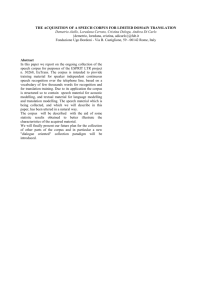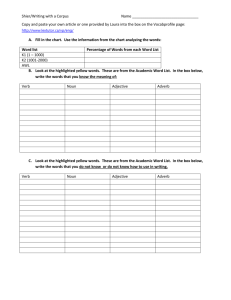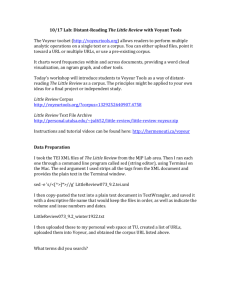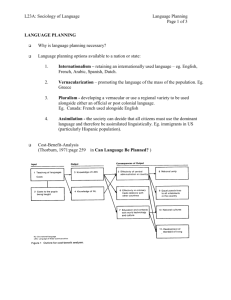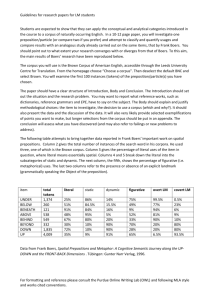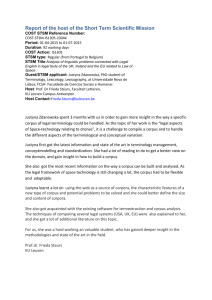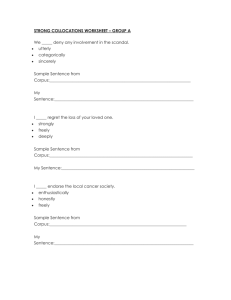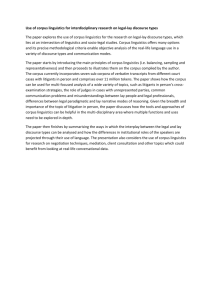LING4030.midterm - jessicacorrales
advertisement
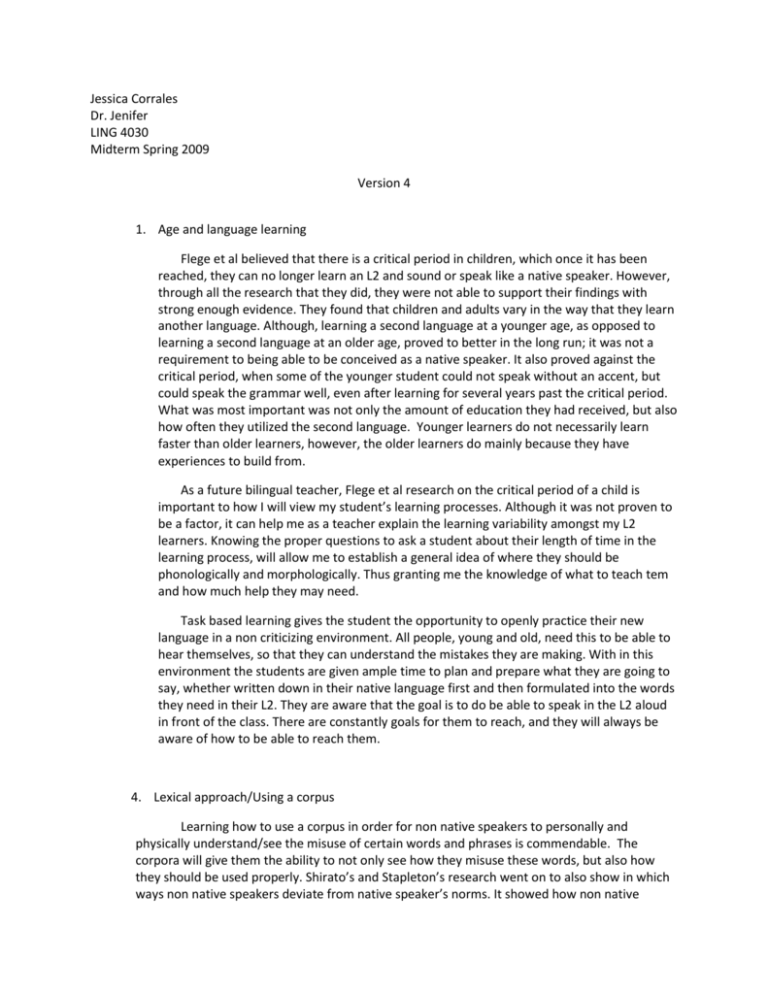
Jessica Corrales Dr. Jenifer LING 4030 Midterm Spring 2009 Version 4 1. Age and language learning Flege et al believed that there is a critical period in children, which once it has been reached, they can no longer learn an L2 and sound or speak like a native speaker. However, through all the research that they did, they were not able to support their findings with strong enough evidence. They found that children and adults vary in the way that they learn another language. Although, learning a second language at a younger age, as opposed to learning a second language at an older age, proved to better in the long run; it was not a requirement to being able to be conceived as a native speaker. It also proved against the critical period, when some of the younger student could not speak without an accent, but could speak the grammar well, even after learning for several years past the critical period. What was most important was not only the amount of education they had received, but also how often they utilized the second language. Younger learners do not necessarily learn faster than older learners, however, the older learners do mainly because they have experiences to build from. As a future bilingual teacher, Flege et al research on the critical period of a child is important to how I will view my student’s learning processes. Although it was not proven to be a factor, it can help me as a teacher explain the learning variability amongst my L2 learners. Knowing the proper questions to ask a student about their length of time in the learning process, will allow me to establish a general idea of where they should be phonologically and morphologically. Thus granting me the knowledge of what to teach tem and how much help they may need. Task based learning gives the student the opportunity to openly practice their new language in a non criticizing environment. All people, young and old, need this to be able to hear themselves, so that they can understand the mistakes they are making. With in this environment the students are given ample time to plan and prepare what they are going to say, whether written down in their native language first and then formulated into the words they need in their L2. They are aware that the goal is to do be able to speak in the L2 aloud in front of the class. There are constantly goals for them to reach, and they will always be aware of how to be able to reach them. 4. Lexical approach/Using a corpus Learning how to use a corpus in order for non native speakers to personally and physically understand/see the misuse of certain words and phrases is commendable. The corpora will give them the ability to not only see how they misuse these words, but also how they should be used properly. Shirato’s and Stapleton’s research went on to also show in which ways non native speakers deviate from native speaker’s norms. It showed how non native speakers had a tendency to overuse some of the most common high frequency words and some adjectives. The use of the corpus will allow them to perpetuate these words correctly when speaking. The corpus also helped them with commonly used word clusters. A corpus gives the students the ability to see their over or under use of the language, and it also shows them which collocations are the most frequent. Although the may need vocabulary and grammar, when individualized it may cause some confusion. They should be taught together and at times in common phrases in order to assist the students with their misunderstandings. Michael Lewis said to try not to think of language as vocabulary and grammar, but as a continuum or spectrum. A corpus in the classroom is not necessary, but would make a good aide for those struggling students. Knowing where to turn when a student cannot understand you explanation is great. The students benefit the most, mainly because they can do it one on one or in groups, and it’s visual. They can read it themselves and see it themselves, which allows for some of the best types of learning. The corpus can help them generate a better grammatical language and vocabulary. This corpus allows them to freely correct whatever mistakes they make, with feeling ridiculed by anyone. Once they feel like they understand why a certain word or phrase is used, they can take the opportunity to share with the other students; giving them a feeling of success. It can be used after a reading that some of the students may find complicated, thus ensuring the grasp of the word or phrase by giving them several other examples. Task based learning is about repetition, and giving the student every opportunity to understand and achieve their goals. The corpus allows the student to be actively involved in the language.

